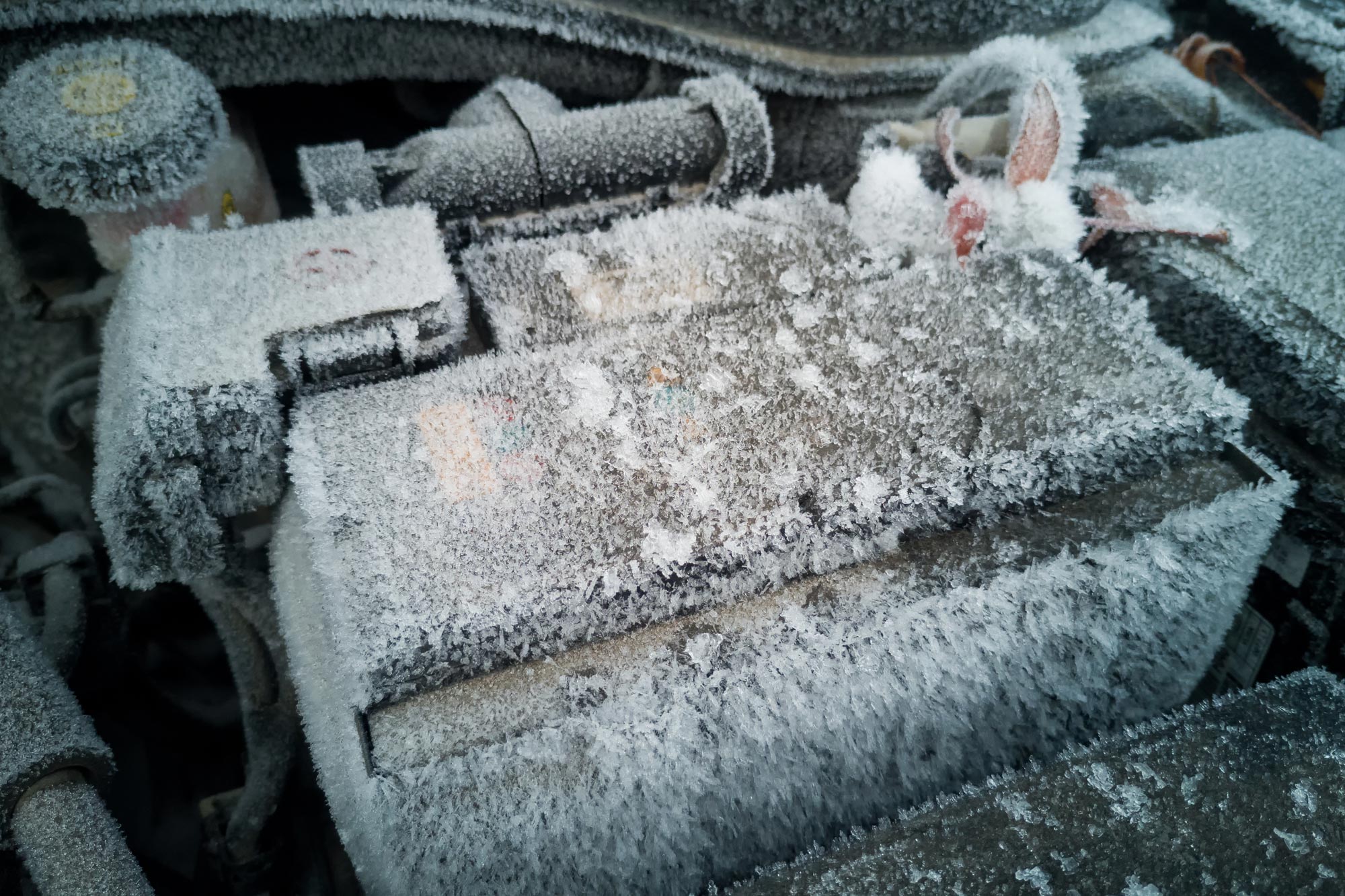A Battery Blanket Can Help Ensure Your Car Starts in Extreme Cold
A frozen battery is a dead battery.
 Shutterstock
Shutterstock
Vehicles exposed to high temperatures during hot summer months are prone to performance problems during the winter. Extreme heat can cause battery fluids to evaporate, expand, and leak, leading to corrosion and reduced capacity, making it more difficult to start the vehicle when temperatures drop.
Drivers in parts of the country that experience below-freezing temperatures may want to consider a battery blanket, especially if their battery is nearing the end of its lifespan — typically between three and five years — so they don't get stuck with a dead battery in winter.
A Battery Blanket Helps Maintain a Stable Temperature
Battery blankets are specialized coverings for automotive 12-volt batteries that start engines — rather than the large lithium-ion battery packs that power electric vehicles — and they're designed to help the battery maintain a stable temperature in cold weather.
Also known as car battery warmers, they wrap around the battery box to protect against extreme cold and keep internal liquids from freezing. Although they may operate similarly, a battery warmer is not the same thing as an engine or block heater, which keeps engine fluids from freezing. However, there are electrical engine blankets large enough to cover both components.
Two Types of Car Battery Blankets
How a car battery blanket works will depend on the type. There are two main types: a simple battery-insulating wrap and an electrically powered battery blanket that includes a warming element. An insulating battery blanket uses high-density heat-trapping materials, such as foam and foil, to wrap around the box and prevent cold air from reaching and freezing internal liquids.
A battery blanket with a warming element also wraps around the exterior of the box, but it includes a power cord that plugs into a standard electrical outlet. When powered on, the blanket's electric coils heat up. They are available in a range of wattage options and cord lengths, and depending on the model, could include a thermostat with auto-on and shut-off features.
A Battery Blanket Is Essential in the Extreme Cold
Cold weather slows down internal chemical reactions in a 12-volt battery and reduces its capacity to start an engine, according to the National Highway Traffic Safety Administration. While a fully charged battery is unlikely to freeze, a discharged battery can die when temperatures dip below 32 degrees Fahrenheit.
When a cold front is in the forecast, drivers with vehicles equipped with electric battery warmers should plug them in. Vehicles outfitted with thermal insulating battery warmers don't require additional steps after installation, and the covering can be left on the unit throughout the year.
Written by humans.
Edited by humans.
 Liane Yvkoff
Liane YvkoffLiane is an automotive technology and lifestyle writer covering alternative powertrains, transportation startups, next-generation infotainment systems, and just about anything else that could “disrupt” your daily commute. Her work has appeared online and in print.
Related articles
View more related articles